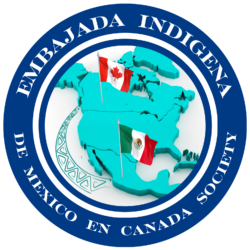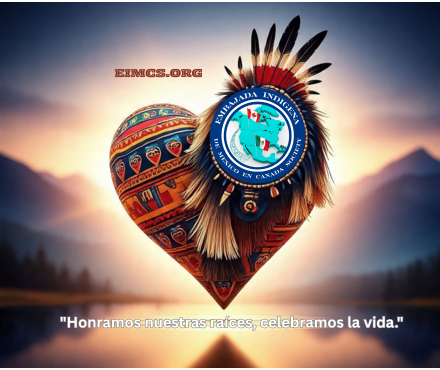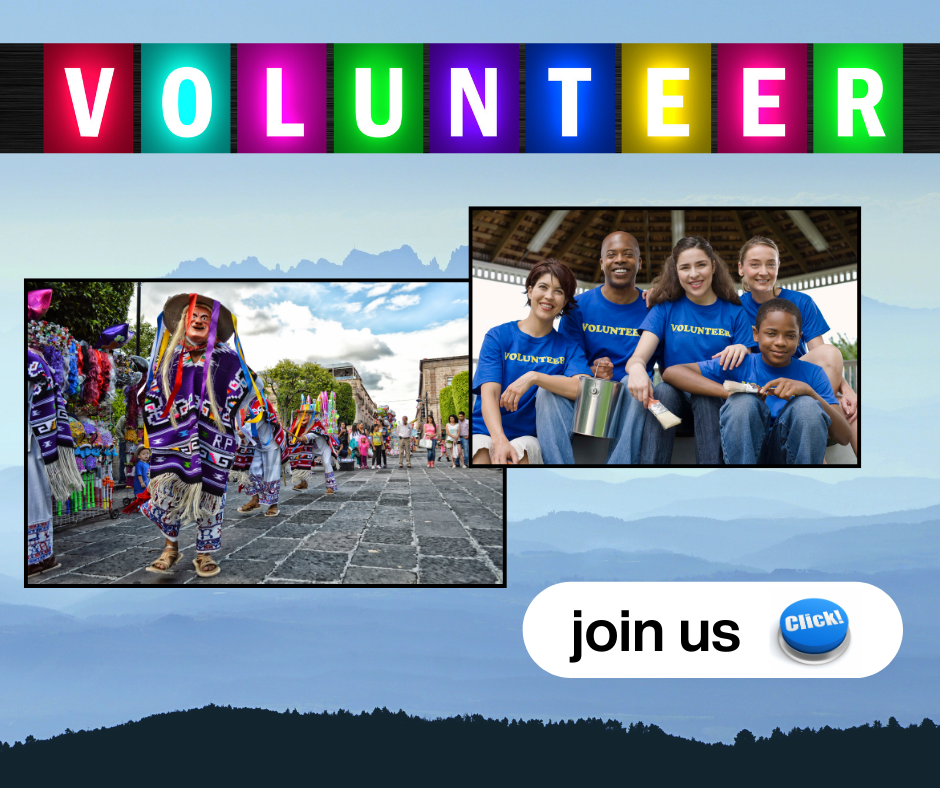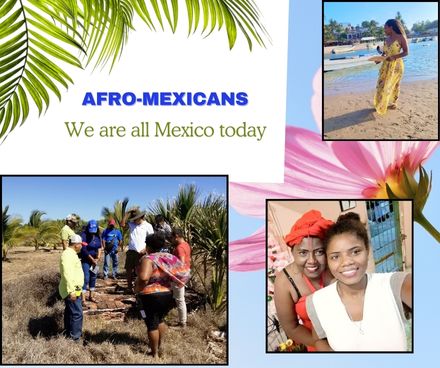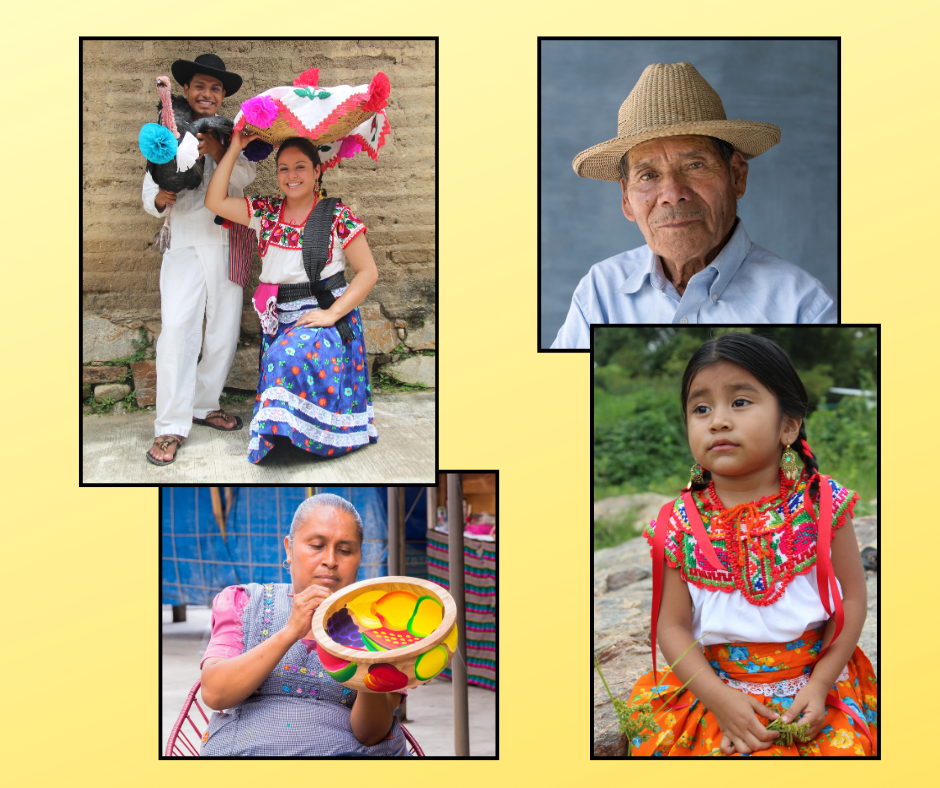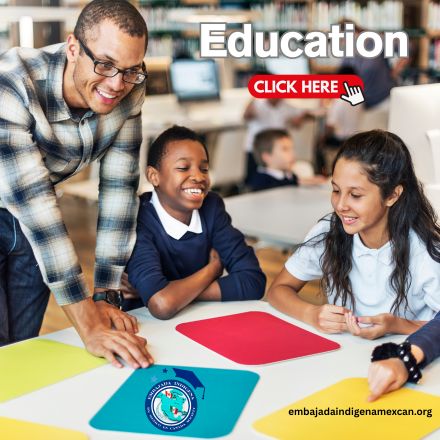"Without education, there is no future; without identity, there is no root."
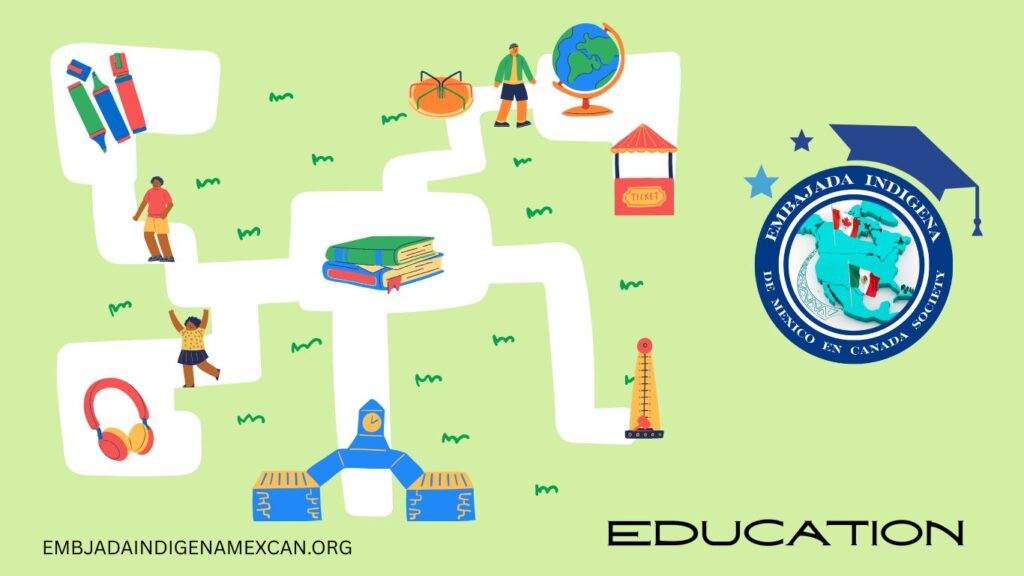
![]()
Department of Intercultural and Community Education
At the Indigenous Embassy of Mexico in Canada, the Department of Intercultural and Community Education stands as a vital pillar for strengthening knowledge, cultural identity, and the holistic development of Indigenous Mexican communities living abroad. This division is dedicated to promoting access to relevant, inclusive, and equitable education that acknowledges and honours the cultural, linguistic, and historical richness of Mexico’s Indigenous peoples.
Vision
To be an international leader in the promotion of intercultural Indigenous education, bridging ancestral knowledge with contemporary learning, and empowering individuals to contribute meaningfully to their communities and to global society.
Mission
To advance educational initiatives that reinforce cultural identity, Indigenous languages, rights, and active participation of Indigenous Mexican communities in Canada and beyond. We foster a respectful and reciprocal exchange of knowledge between Indigenous nations and other cultures.
Objective
To develop and coordinate programs, projects, and strategic partnerships aimed at:
Promoting bilingual and bicultural education for Indigenous children, youth, and adults from Mexico living in Canada.
Creating spaces for education, training, and capacity building with a human rights and community-based approach.
Supporting the preservation and dissemination of Indigenous knowledge, history, and native languages.
Encouraging the professional development of Indigenous leaders, educators, and cultural advocates.
Humanitarian and Social Purpose
Guided by a humanitarian vision, the Education Division views education as a fundamental right and a powerful tool for social transformation. Our purpose is to contribute to the sustainable, autonomous, and community-centred development of Indigenous peoples, addressing systemic inequalities and strengthening the social fabric between Mexico and its Indigenous diaspora in Canada.
This department serves as a bridge for intercultural understanding, facilitating mutual recognition and collaboration among diverse cultures, and affirming that education rooted in identity not only benefits Indigenous communities, but also enriches society as a whole through values of respect, solidarity, diversity, and justice.
Key Programs and Initiatives
Workshops and diploma courses on Indigenous education, community pedagogy, and language revitalization.
Agreements with universities and research centres in Canada and Mexico.
A virtual platform offering educational resources in Indigenous languages.
Scholarships, mentorship, and support networks for Indigenous Mexican students abroad.
Cultural and academic events promoting Indigenous worldviews and knowledge systems.
The Department of Education of the Indigenous Embassy of Mexico in Canada reaffirms its unwavering commitment to Indigenous peoples and to the creation of a world where cultural diversity and the right to dignified education form the foundation of a more just and inclusive society.
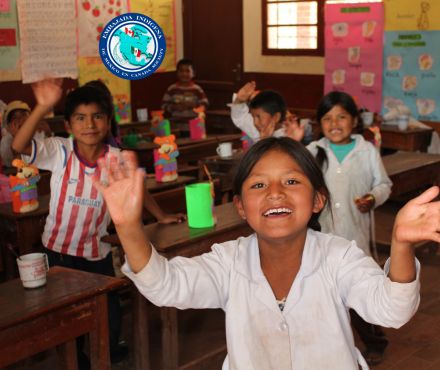
Education for Indigenous children and communities is an essential tool for preserving cultural identity, strengthening community autonomy, and ensuring the full exercise of their rights. An intercultural approach to education allows Indigenous youth to grow with pride in their heritage, develop their abilities in a holistic way, and actively participate in the transformation of their surroundings. By integrating ancestral knowledge with contemporary learning, a bridge is built between generations that ensures the continuity of Indigenous languages, traditions, and worldviews. In this context, the Indigenous Embassy of Mexico in Canada plays a key role as a promoter and advocate for the right to a dignified and culturally relevant education for the Mexican Indigenous diaspora, working in collaboration with educational institutions, communities, and international organizations. Its efforts not only highlight the needs and strengths of Indigenous Peoples, but also drive educational processes that contribute to a more equitable, diverse, and respectful society.
Statistics on indigenous educational levels in Mexico
Statistics on the educational attainment of Indigenous peoples in Mexico are crucial for understanding the country’s social and economic inequalities. Below, we present a summary of some of the most relevant statistics related to this topic, based on the most recent data from sources such as INEGI (National Institute of Statistics and Geography) and the 2020 Intercensal Survey.
1. Literacy Rate
According to the 2020 Population and Housing Census, the literacy rate among people aged 15 and over in Indigenous populations is considerably lower than in the general population.
In urban areas, the literacy rate is higher, while in rural areas and Indigenous communities, the rate is lower.
Approximately 93.1% of Indigenous people are literate, while among the non-Indigenous population, this figure is 98%.
2. Access to Basic Education
Nationally, more than 98% of children of primary school age are enrolled. However, in Indigenous communities, school dropout rates are a significant problem, particularly in secondary education.
In rural and Indigenous communities, school dropout rates are higher due to factors such as the lack of adequate school infrastructure, the need for domestic or agricultural work, and language barriers.
3. Level of Education Attained
In Indigenous communities, it is observed that upper secondary education (high school or equivalent) is less widely attained compared to the non-Indigenous population. Only 5.5% of Indigenous people achieve this level of education, while among the non-Indigenous population, this percentage is 35.3%.
Regarding higher education, only 1.4% of Indigenous people have access to a university degree, while among the non-Indigenous population, the percentage rises to around 20%.
4. Main Barriers to Access to Education
Linguistic Discrimination: Many Indigenous children and youth do not speak Spanish as their native language, which represents a significant barrier to their integration into the education system.
Lack of Infrastructure: In many Indigenous communities, schools are remote, poorly equipped, or lack qualified teachers.
Poverty and Marginalization: Indigenous families face difficult socioeconomic conditions that limit access to school materials, transportation, and, in many cases, even the ability to send their children to school due to financial hardship.
5. Public Initiatives and Policies
The Mexican government has implemented various public policies, such as the National Program for Indigenous Languages and the 100% Schools Program, to improve the quality of education in Indigenous communities.
However, these initiatives have not yet fully closed the educational gap between Indigenous and non-Indigenous populations.
6. Gap in Access to Technology
Indigenous communities also face limited access to information technology, which has become more evident during the COVID-19 pandemic, when distance learning was the only option for continuing their studies. In rural and Indigenous areas, the lack of access to the internet and electronic devices was a significant barrier for many students.
In short, although there has been progress, significant challenges remain in improving the educational level of Indigenous peoples in Mexico. Public policies should focus not only on improving educational infrastructure, but also on cultural inclusion, respect for Indigenous languages, and improving the socioeconomic conditions of these communities.
